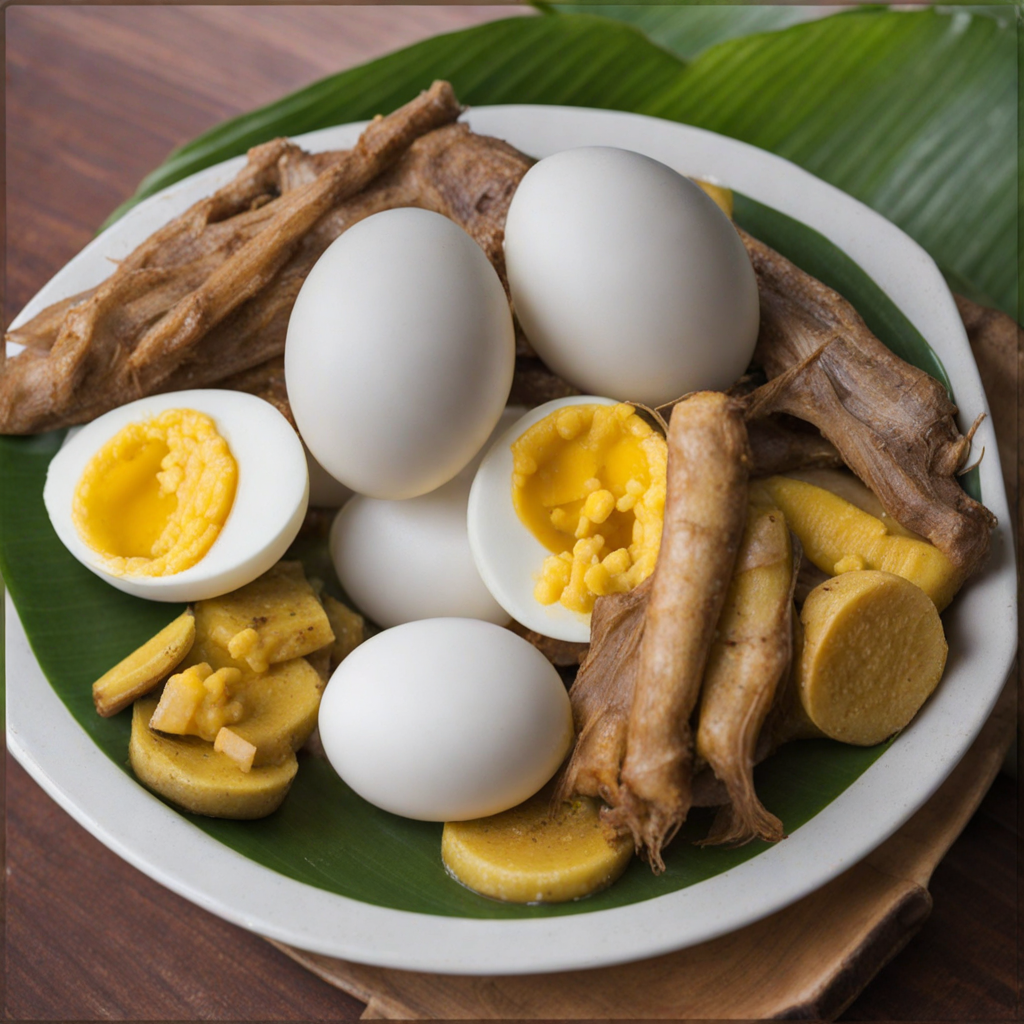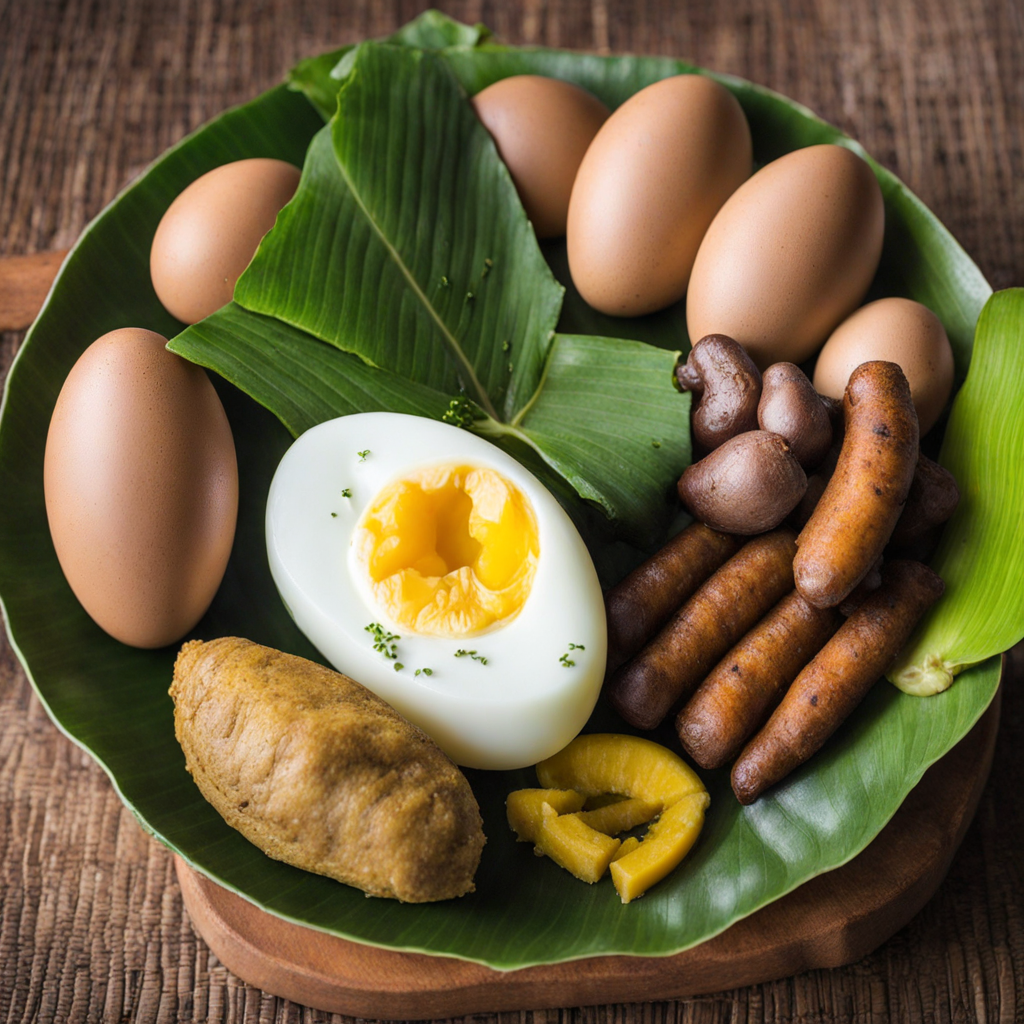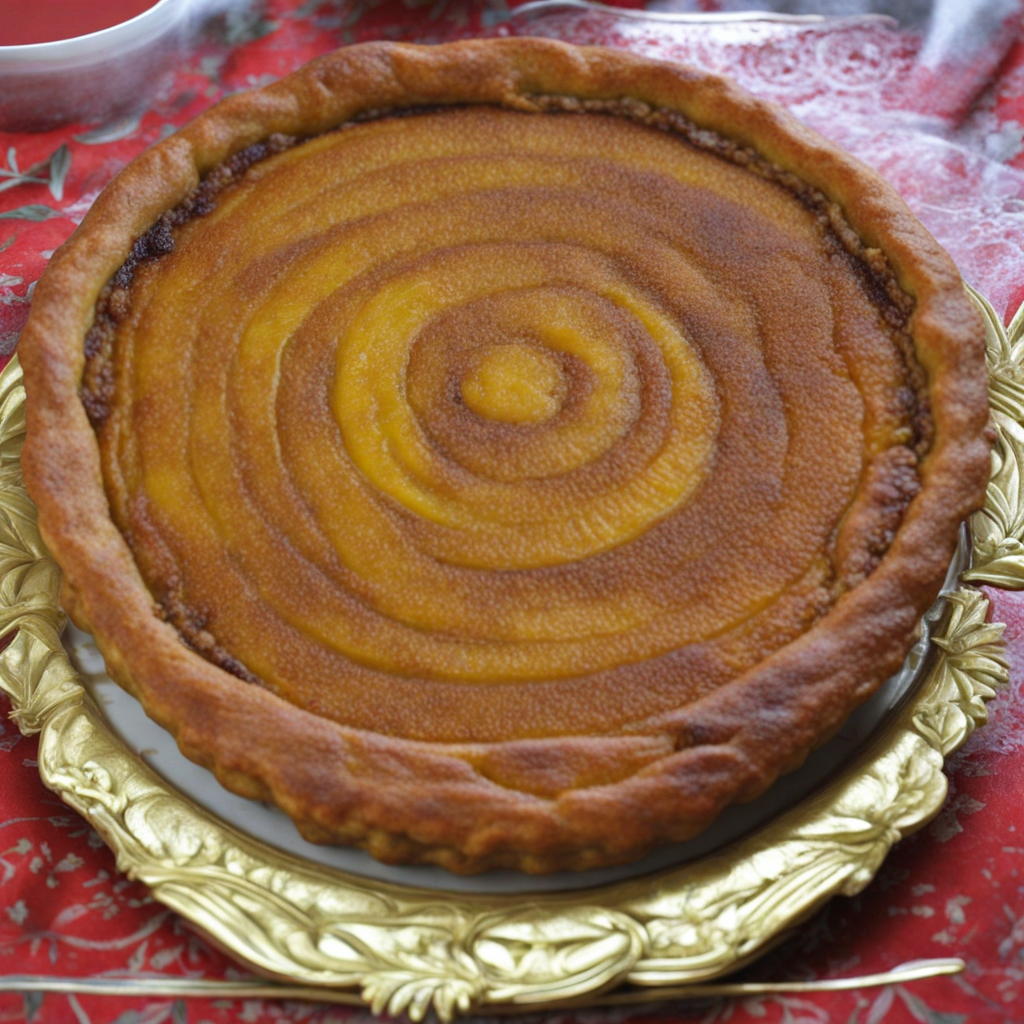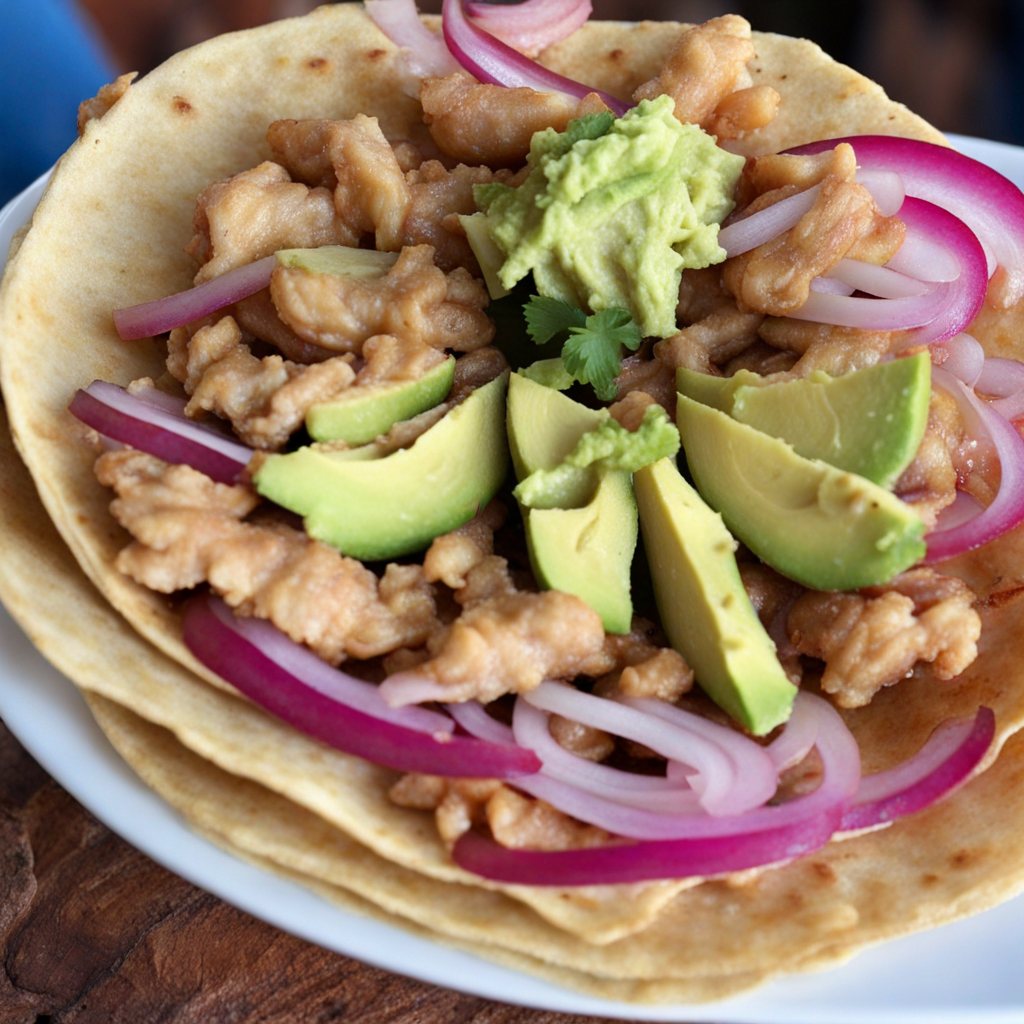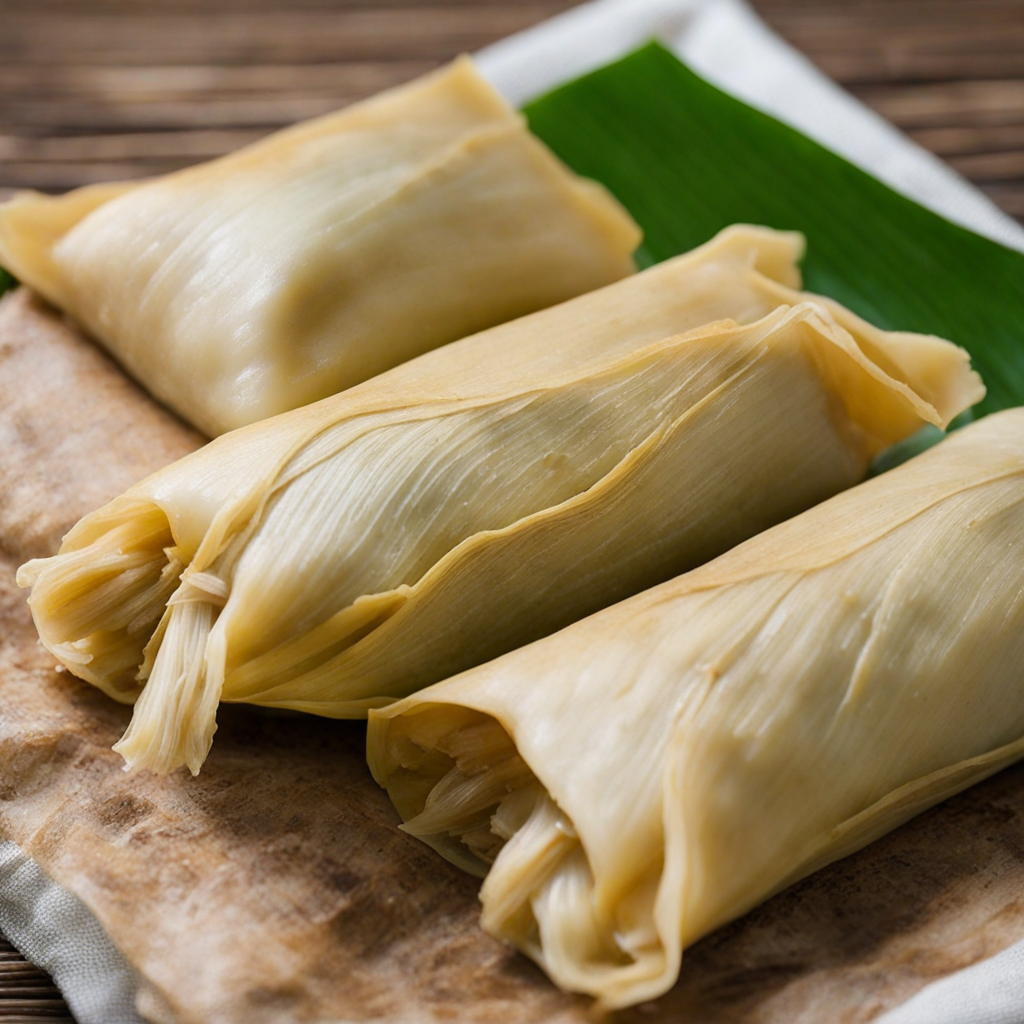Bile Up
Bile Up is a vibrant and hearty dish from Belize that beautifully showcases the region's rich culinary heritage. This traditional plate consists of a mix of ingredients, often featuring rice and beans as the base, accompanied by a variety of meats such as chicken, beef, or pork. The dish is typically seasoned with a blend of local spices, including garlic, onion, and chili peppers, which infuse it with a deep, aromatic flavor profile that is both comforting and invigorating. The combination of textures—from the tender grains to the succulent pieces of meat—creates a pleasurable eating experience that is sure to delight the senses. The preparation of Bile Up usually involves a slow-cooking process, allowing all the ingredients to meld together and develop a rich, savory sauce that clings to the rice and beans. Often served with a side of freshly made tortillas or fried plantains, this dish embodies the spirit of communal dining, inviting friends and family to gather around the table and share in the flavors of Belize. Each bite reveals layers of taste, with the earthiness of the beans and the richness of the meat complemented by the kick of spices, making it a truly satisfying meal. One of the unique aspects of Bile Up is its versatility; it can be adapted to suit various dietary preferences by swapping out meats or incorporating additional vegetables. Some variations might include the use of coconut milk to enhance creaminess or the addition of fresh herbs for a burst of brightness. This adaptability, combined with its robust flavors and hearty nature, makes Bile Up a beloved staple in Belizean cuisine, perfect for anyone looking to explore new tastes and culinary traditions.
How It Became This Dish
Bile Up: The Heart and Soul of Belizean Cuisine Bile Up is a traditional dish from Belize that embodies the rich tapestry of the nation's cultural heritage. This hearty meal, often regarded as a comfort food, reflects the diverse influences that have shaped Belizean gastronomy over centuries. Understanding Bile Up requires an exploration of its origins, cultural significance, and its evolution in the ever-changing culinary landscape of Belize. Origins The roots of Bile Up can be traced back to the indigenous peoples of Belize, primarily the Maya, who have inhabited the region for thousands of years. Their culinary practices revolved around local ingredients, utilizing maize (corn), beans, and various vegetables that were staples in their diet. As European colonizers arrived in the 16th century, they brought with them new agricultural products and cooking techniques, which began to intermingle with the indigenous methods. The name "Bile Up" itself is believed to come from the Creole influence in Belizean culture. The term "bile" refers to the act of boiling or cooking together, while "up" suggests a gathering or a mix of ingredients. This reflects the communal aspect of the dish, as it is often prepared in large quantities and shared among family and friends. Traditionally, Bile Up consists of a combination of rice, beans, meat (often chicken, pork, or beef), and a variety of spices and vegetables. The dish is typically cooked in a single pot, allowing the flavors to meld together, creating a warm, comforting meal that is both nourishing and satisfying. The use of local ingredients, such as recado (a seasoned paste made from roasted tomatoes, peppers, and spices), adds a distinct flavor that is characteristic of Belizean cuisine. Cultural Significance Bile Up is more than just a meal; it is a symbol of Belizean identity and community. In a country characterized by its multicultural population, with a blend of Maya, Garifuna, Mestizo, Creole, and various other ethnic groups, Bile Up serves as a culinary bridge that brings people together. It is often prepared during family gatherings, celebrations, and holidays, reinforcing the bonds of kinship and cultural heritage. The dish's communal nature is evident in the way it is typically enjoyed. Families often gather around a large pot of Bile Up, sharing stories, laughter, and memories while savoring the flavors of their shared history. This act of coming together over a meal is deeply ingrained in the social fabric of Belizean life, highlighting the importance of food as a medium for connection and cultural expression. Moreover, Bile Up has become a staple in the local economy, with many street vendors and restaurants proudly serving their versions of the dish. This has contributed to the preservation of traditional cooking methods and the continuation of culinary practices that define Belizean cuisine. The dish also plays a role in tourism, attracting visitors eager to experience authentic Belizean flavors. Development Over Time As Belize has evolved, so too has Bile Up. The dish has adapted to reflect changing tastes, availability of ingredients, and the influence of global culinary trends. In recent decades, Belize has witnessed an influx of international cuisine, leading to a fusion of flavors that has impacted traditional dishes, including Bile Up. One notable change is the incorporation of new ingredients and flavors, as chefs experiment with different meats, seafood, and vegetables. For instance, the rise of health consciousness has led some cooks to create variations of Bile Up that are lighter, using alternatives such as quinoa or brown rice instead of white rice. Vegetarian and vegan versions have also emerged, catering to a growing demand for plant-based options. Additionally, the global food movement has sparked interest in organic and locally sourced ingredients, which many Belizean cooks embrace. The emphasis on sustainability and farm-to-table practices has encouraged the use of fresh, seasonal produce, further enhancing the flavor and nutritional value of Bile Up. Despite these adaptations, the essence of Bile Up remains intact. The dish continues to be a beloved staple in Belizean households, cherished for its heartiness and the comfort it provides. It serves as a reminder of the country's rich history and the blending of cultures that have shaped its culinary landscape. Conclusion Bile Up is more than just a dish; it is a celebration of Belizean culture, history, and community. Its origins reflect the ancient practices of the Maya, while its evolution showcases the adaptability and creativity of Belizean cooks throughout the years. As the nation continues to grow and change, Bile Up remains a cherished symbol of unity and tradition, inviting both locals and visitors to savor the flavors of Belize and share in the stories it tells. In a world that often feels fragmented, the act of gathering around a pot of Bile Up serves as a powerful reminder of the importance of community, connection, and the shared experience of food. Whether enjoyed at a family gathering, a festive celebration, or a local eatery, Bile Up stands as a testament to the enduring power of food to bring people together, nourish the body, and celebrate the diverse cultural heritage of Belize.
You may like
Discover local flavors from Belize


